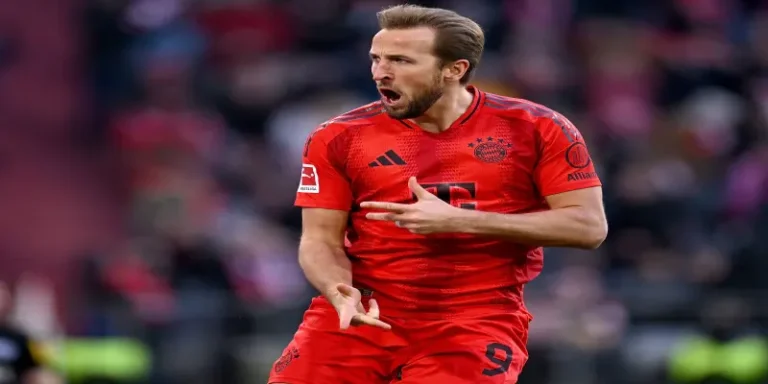
Gimnasia LP FC
As the landscape of professional football continues to evolve, embracing technology has become a pivotal element for clubs like Gimnasia LP FC to thrive. The integration of advanced analytics, performance monitoring tools, and fan engagement technologies can profoundly impact a club’s performance both on and off the field.
Data Analytics: A New Era of Gimnasia LP FC
The role of data analytics in football cannot be understated. By analyzing player performance, match statistics, and opposing teams’ tendencies, Gimnasia LP FC can gain a competitive edge. This transformative approach allows the coaching staff to make informed decisions regarding game strategy, training regimes, and player selection OK9.
The collection and analysis of data provide critical insights into player health, in-game decisions, and tactical adjustments that may need to be implemented over the course of a match. For instance, using wearables and GPS tracking during training can help monitor players’ fatigue levels, allowing coaches to adjust their workloads accordingly.
Moreover, opposition analysis through data is essential. Scouting reports based on statistical patterns enable teams to capitalize on weaknesses, leading to tailored game plans that can exploit vulnerabilities detected in opponents. Ultimately, this data-driven approach to football fosters a more strategic mind-set within the club, allowing them to challenge some of Argentina’s elite teams more effectively.
Enhanced Fan Engagement through Digital Platforms
The advent of technology has also empowered clubs to develop unique experiences for their fans beyond just match days. Gimnasia LP FC can take advantage of digital platforms, mobile applications, and social media channels to engage with supporters actively.
Utilizing social media platforms allows the club to create interactive content. They can share behind-the-scenes insights, player interviews, and live match updates, thereby enriching the supporter experience. Engaging content encourages fans to feel invested in the club’s mission and nurtures their loyalty to the team.
Additionally, creating a mobile app can serve numerous purposes, such as providing fans with match highlights, ticketing options, updates on youth academies, and merchandise opportunities. Such innovations foster a stronger connection between the club and its supporters while enhancing the overall match-day experience. Greater interaction through digital channels ultimately empowers fans and places them at the forefront of the club’s journey.
The Role of Virtual Reality in Player Training
Another promising avenue in the incorporation of technology is the use of virtual reality (VR) in player training. This innovative training tool allows players to experience competitive scenarios in a controlled environment, refining their skills without the physical strain of traditional training.
VR can simulate various match situations, allowing players to practice decision-making, spatial awareness, and even teamwork. By stepping into virtual game scenarios, players gain insights into how to react under pressure and improve their tactical understanding of the game. This technology not only aids current players but can also be used to prepare promising youth talents for the demands of professional football.
Furthermore, VR technology can also benefit coaching staff by providing them with visual feedback on strategy implementation during training sessions. Coaches can analyze players’ decisions and movements in a simulated environment, facilitating a more thorough understanding of player dynamics.
The Promise of Artificial Intelligence in Recruitment
The recruitment process is one of the most crucial aspects of a football club’s strategy, and incorporating artificial intelligence (AI) into this field offers immense potential. An AI-driven approach can help identify and evaluate prospective players by analyzing vast amounts of data, including performance metrics, injury history, and even psychological factors pertinent to on-pitch performance.
AI tools refine scouting efforts, allowing clubs like Gimnasia LP FC to discover talents who may have been overlooked in traditional scouting methods. This not only aids in talent acquisition but ensures that signings align with the club’s vision and playing style, ultimately leading to stronger and more cohesive squad development.
Moreover, AI can assist in monitoring player development, guiding coaching decisions through actionable insights. The combination of performance tracking and analytical foresight enhances the chances of successfully integrating players into the first team, leading to sustained competitive success for the club OK9 events.
Conclusion
In the realm of modern football, embracing technological advancements is no longer a luxury but a necessity. For Gimnasia LP FC, the strategic application of data analytics, enhanced fan engagement through digital platforms, the innovative use of virtual reality, and artificial intelligence in recruitment can revolutionize their operations. By becoming an early adopter of these advancements, Gimnasia amplifies its chances of fostering an increasingly competitive side while solidifying its connection with the La Plata community. In this journey toward modernization, the club may find that technology not only enhances performance on the pitch but also fosters a sense of unity with its supporters, ensuring that, together, they can navigate the future of Argentine football with ambition and success.



